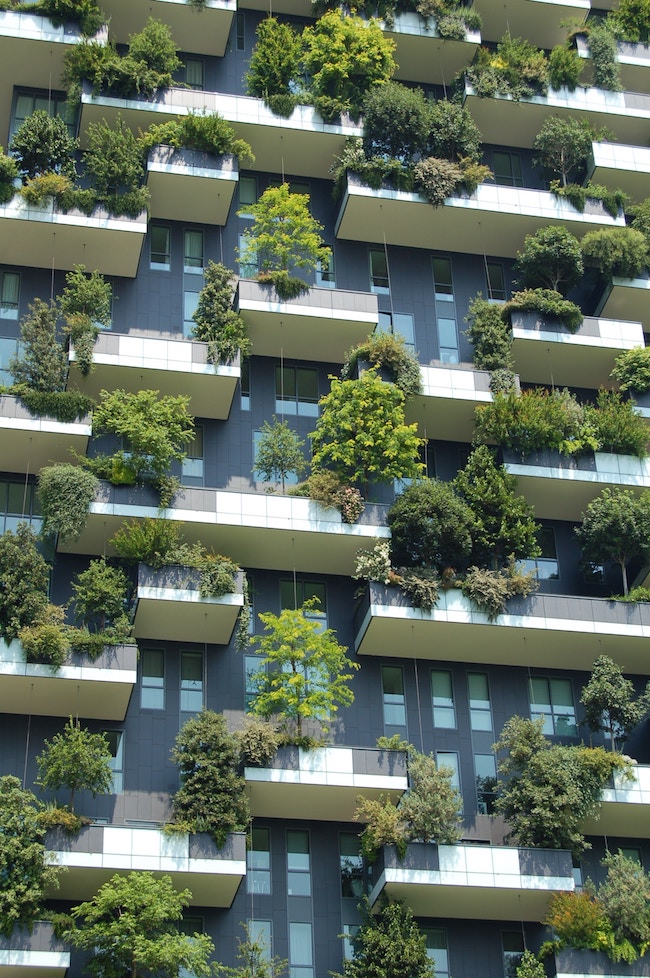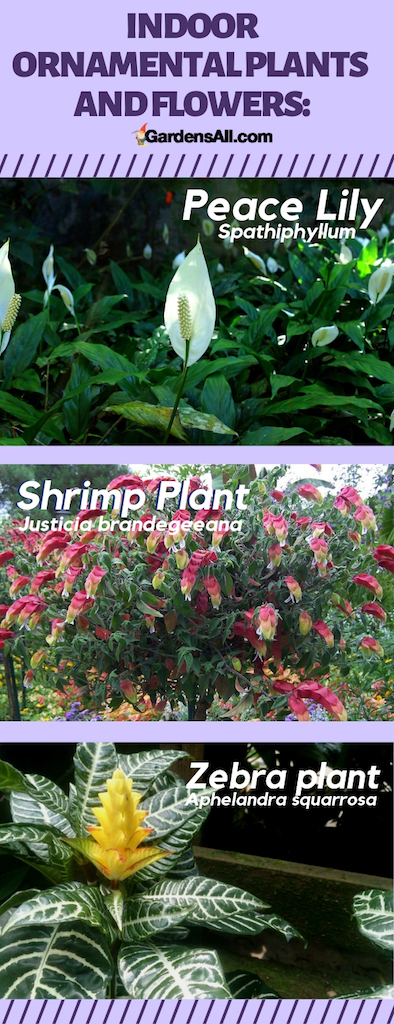Container gardening using garden planters provides flexibility and accessibility for growing all kinds of plants, including vegetables and flowers.
Garden planters offer a convenient way for you to get growing. In fact, you can use them in virtually any garden space. Because of their flexible nature, you can use them in spaces varying from the tiniest balcony gardens to urban rooftops.
Not only are garden planters flexible in terms of the available space, but they are also helpful in hardiness zones with unpredictable weather patterns. Growing in containers also provides the opportunity for expressing your unique creative flair, from humorous to cute, funky to functional, there are sure to be containers for every taste and need.
Take a look as we explore the many options in the realm of container gardening.
5 Reasons to Use Garden Planters
So, you might be wondering why people would choose to grow in garden pots or planters. Here are some of the best reasons to give them a try.
1. Easier to grow plants, flowers and veggies anywhere.
Growing fresh fruits and vegetables in garden pots or planters is a great way to supplement your food bill with highly nourishing fresh produce. Homegrown is a nutrient rich as it comes.
In many countries, such as the Philippines, container gardening can even help to feed families. Residents there heavily rely on growing their own vegetables, even in large urban areas like Manila. Without container garden planters, many would go without access to fresh produce.
While you certainly can’t grow a full garden on a balcony, there’s a lot you can grow in garden planters and vertical gardening systems.
“[K]itchen or family gardens… to grow vitamin-rich, nutritious vegetables and fruits, generally quite expensive on the local market.”
~According to Willem Van Cotthem, PhD., of Ghent University,
Garden Planters Ideas for in the City
We love the concept of how garden planters can be used for turning barren city rooftops into productive vegetable gardening❣️
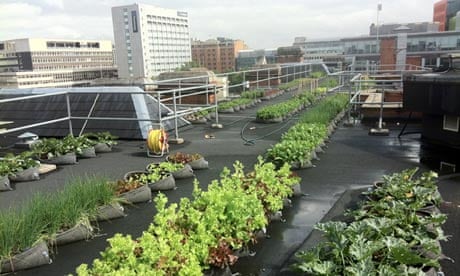
Balcony Gardens
Growing trees on balconies?!? Awesome! Garden planters bring nature to the concrete jungle of apartment buildings. Garden planters let urban dwellers create their own balcony garden oasis.
2. Growing plants in urban areas helps improve air quality.
Plants clean the air by absorbing carbon dioxide from the atmosphere and oxygenating the air in photosynthesis. So in large cities, planned rooftop gardens can actually help to fight pollution.
Plants oxygenate and freshen the air by absorbing carbon dioxide from the atmosphere in photosynthesis.

Some rooftop gardeners grow in extra large garden planters and grow bags. Office building with rooftop gardens become an oasis where employees can enjoy eating lunch outdoors.
Balcony gardens are also a wonderful option for apartment buildings that have balconies. Imagine the face of a tall apartment building where each balcony is full of plants of all kinds.
Rooftop gardens can not only transform a building, they can transform the lives of those who live or work there as well as the surrounding areas. Just one rooftop garden becomes a delightful focal point for all within a view of it.
Urban gardens provide food for the soul… and the birds and the bees.
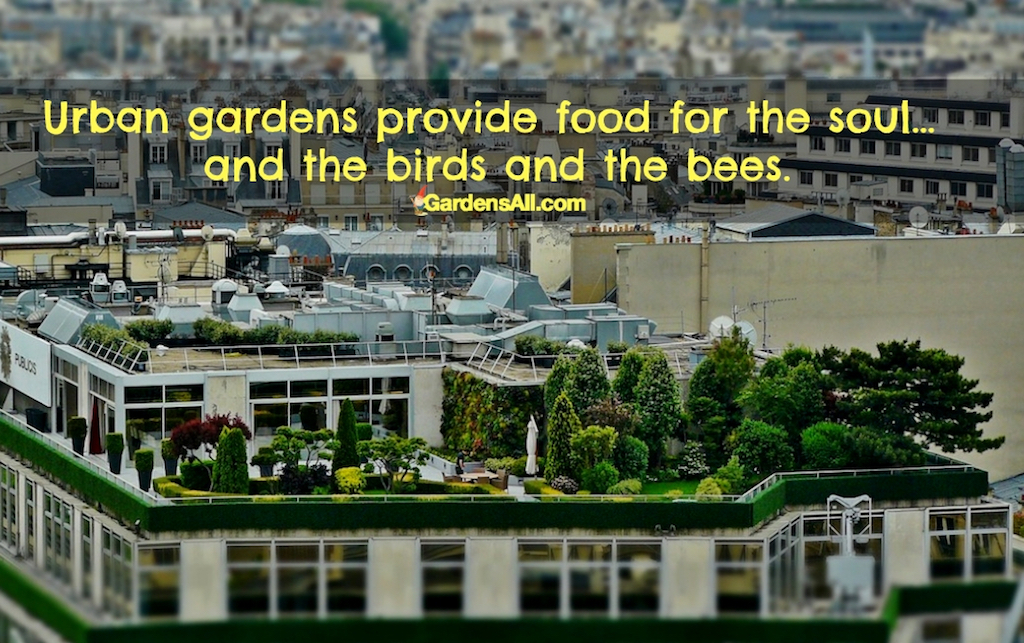
3. Easily grow plants and flowers to add beauty and peace to any environment.
Beyond the utilitarian uses of container garden planters, consider the sheer joy and beauty. While growing your own food and clearing the air are fantastic goals, sometimes you just want to take time out to smell the flowers.
Yes, flower planters are a popular option and enhance your home. Add flowers out on the patio or in indoor planters to create a fragrant oasis.
“Take some time to smell the flowers
As you walk the path of life.
Take some time to ease the tensions
From the challenges and strife.”
~Excerpted from “Take Some Time” by Leon Hansen
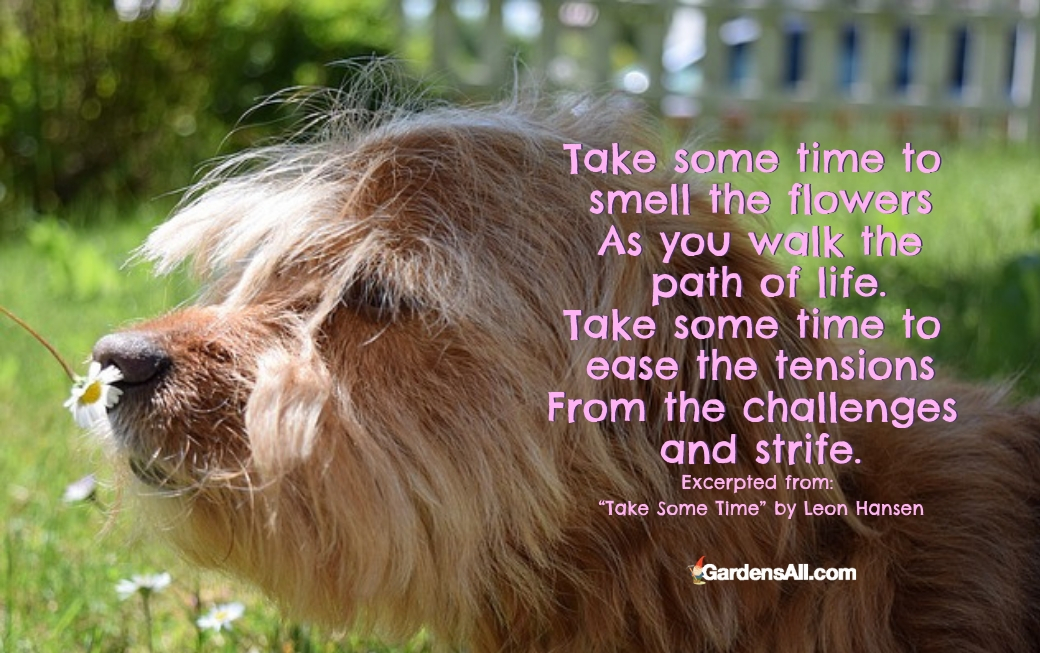
4. Garden planters provide easier access for the disabled and elderly.
Those who have mobility impairments often find container gardening safer and easier to make accessible. We’ve had a number of folks in the GardensAll community say that they can no longer garden like they used to. Yet most of those folks are so grateful to be able to still grow a few plants such as herbs and tomatoes from their patio or deck.
Container Gardening Options
- Garden tables and grow boxes
- Rotating planters
- Tower planters – come in all types
- round
- pyramids
- multiple sided
- tiered one sided
- Upside down tomato planters
- Garden planters on castors
- Grow bags
- Wall gardens
- pockets
- wall hanging pots and planters
- fence/deck rail hanging planters and pots
Many of the tower and table designs come with wheels or castors, which can be very helpful for optimizing for sun, cleaning and accessibility.
When it comes to potting soil, it’s cheaper to buy it from your local home store to save on shipping costs. However, if you’re unable to easily lift bags of potting soil, it can be worth it to pay a few dollars extra in shipping to get it delivered right to your door.
At your local homestore, you can ask for assistance in having the item loaded to your cart and then your car. However, once home, you’ll still need to lift it from your car to your garage, shed or garden. So to order heavier garden items online, you can save the time and backache by having it delivered directly to your door.
If you make the acquaintance of your delivery person—or in your order delivery instructions—you can ask them to deliver it to the location your specify. If it’s within reason, such as to your garage door instead of your front door, chances are they’ll be glad to accommodate that.
In a UK study entitled Growing Health, Food Growing for Health and Well-Being, Professor Tim Lang with the Centre for Food Policy at City University London, states the following:
For the large number of people in our society – children and adults – who live with challenging physical or mental health problems, gardening and community food growing can be especially beneficial.
Choosing the right garden pots
Whether you want lush, vibrant blossoms or bountiful herbs or veggies, choosing the right garden planters is a must.
Consider the location
First, consider the use of the container. Ask yourself the following questions:
- Do you need outdoor or indoor planters?
If you’re planting outside:
- Do you want outdoor hanging planters or planters that will rest on the ground?
- Are you planning to use smaller plastic planters which are lighter in weight or investing in a plant caddy to maneuver around heavier pots?
- Do you want large concrete planters that will stay in a fixed position?
Or, if you plan to grow indoors:
- Do you want tall planters to accentuate a bland corner of the room?
- Do you want indoor hanging planters that will capture the sunshine, or do you want to set your containers on a plant stand?
Know what you’re planting
Also, think about precisely what plants you intend to grow. While most typical plants grow happily anyplace they have soil, sunlight, and water, some have special requirements.
For example, plants with a larger root system require large garden planters. Or, ornamental trees might require larger, heavier pots to counterbalance a top-heavy weight.
Before you purchase plants for your container garden, read the labels. They will often instruct you on whether or not they are suited to growing in pots.
Think outside the pot
Don’t limit yourself to standard plastic planters. Some of the most charming container gardens are filled with unique and wonderful “outside the pot” creations.
My grandfather passed away while I was in college. We lived next door, so he came over every day to eat with us every evening. He always carefully removed his boots (he wore them all year round) and left them right inside the back door.
After he passed, my mother removed the laces, filled the boots with soil, and grew succulents in them. Those boots held a position of honor for many years in that sunny spot near the back door until the leather eventually deteriorated.
While I don’t have a photo of them, I searched Pinterest and found something similar to them.

I’ve also seen crafty projects converting dresser drawers, pine pallets, and even a discarded golf bag into unique planters.
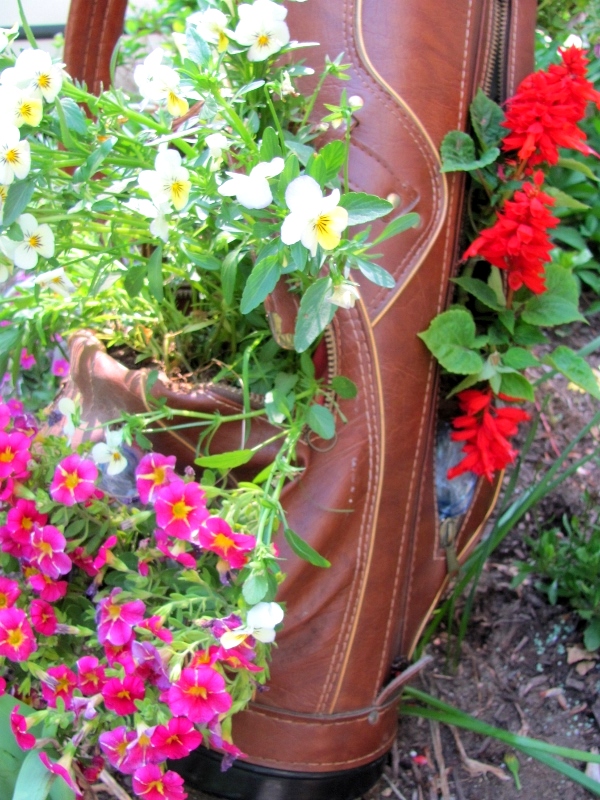
Go vertical
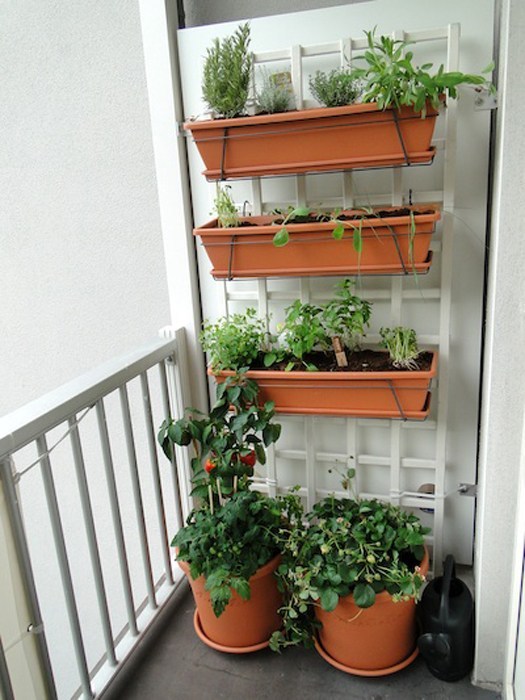
Indeed, even those with tight spaces can garden. The trick is to take advantage of vertical space.
For four years, my husband and I lived in a small apartment when his job moved us to Ohio. We never purchased a home there, as we knew it was not a forever place for us.
Fortunately, our unit faced southwest, and I enjoyed plenty of sunshine which enabled me to garden.
A lifelong gardener, I created a green oasis from spring through fall using sturdy metal hanging planters from the eaves of our 4’x10′ balcony. I was able to create a hanging herb garden.
Additionally, I added two upside down tomato planters and harvested tomatoes weekly for roughly 8 weeks every year. I was surprised at how productive those plants were!
Last, I took advantage of the railing by adding two deck planters that hooked over the outside rim of the railing. I grew bright pink petunias in those.
All that grew in one tiny space with plenty of room left over for our gas grill and a cute bistro table. Who knew?
Growing considerations for container gardens
Sunlight
Like any garden, your garden pots and planters need sunlight. Cooler weather varieties such as lettuce or kale can tolerate filtered sunshine.
However, if you’re growing flower planters, tomato planters, or anything that requires full-sun for 6 to 8 hours daily, that’s a consideration. Be sure to position them in optimal conditions in south-facing locations.
Unsure what direction your garden faces? Install a compass app on your phone to get your bearings.
Weight of pots
Pots weigh more than you’d imagine. Beyond the soil weight, add in the weight of the actual container, water weight, and even a plant heavy with ripe produce.
When planning your containers, use large garden planters in locations where they will rarely be moved. Or, invest in a plant caddy on casters.
Plastic planters are sturdy enough for almost anything you want to grow and are lighter to move should it become necessary.
Access to water
Unless you’re growing a succulent garden, you’ll need to give your plants good drinks of water. Plants dry out faster in pots than when planted in the earth.
Last summer, my friend Abby said she was giving up on her garden. When I asked her why she explained that everything was withering.
I popped over to look at her situation. She had invested in gorgeous cedar planters that were spiked into the ground. Sure enough, all her flowers were parched. I asked her the obvious question–how frequently she watered her plants.
Her response was a sheepish admission that she’d located these very expensive planters far from the garden hose. As a result, she was lugging 5-gallon buckets of water to the garden in the 100-degree North Carolina sun.
So, she did what any good mom would do–delegated the chore to her teenaged son. Needless to say, her plants were dying a slow death within three weeks.
When fall rolled around, she and her hubby moved the planters closer to the home. Because these were extra large garden planters, the distance to water became a flaw in her landscape plan. Moving them nearer the water was the right call.
Don’t mark the spot
If you’re placing garden containers on your deck or concrete surfaces, know that you might leave some spots if you don’t take care.
First, the sun causes stained wood (or carpet in the case of indoor planters) to fade. When you move your planters, you could expose an area that still appears new.
Also, dirt can seep out the drainage holes in the bottom of your planters, creating dark rings. This can sometimes be washed away with a pressure washer. However, water rings may not be so easily removed.
Water stains aren’t the realm only of pots. Even outdoor hanging planters dripping after a long watering can create a stain over time.
Take care to protect surfaces if dark stains or water rings are a concern.
Plants that flourish in garden planters
Ornamental trees:
When you’re planting trees, be sure to think about how top-heavy a tree will become. Even though a tree appears small at the beginning, it needs a large garden planter to support root spread and its eventual weight!
Indoor ornamental trees:

Don’t you love the look of trees growing in pots in posh office buildings? They freshen the air and lend the space a lively look.
You can achieve that look at home using indoor planters. Some of the trees that thrive inside are the following:
- Dragon Tree (Dracaena marginata): If you want a tall tree with a tropical vibe, one species that delivers that look is the Dragon Tree. It grows as high as ten feet and requires many 8 daily hours of indirect sunshine.
- Triangle Ficus (Ficus triangularis): Want a tree that’s fairly hardy? As long as you place the Triangle Ficus in direct sunlight, it will grow happily. Water it regularly, and it will display bright green, triangle-shaped leaves for you to enjoy for years.
- Yucca (Yucca elephantipes): Uncertain about how much you should water an indoor tree? Try a Yucca. They are a desert native, drought-resistant tree. Place it in a large garden planter and place it in direct sunlight to create a personal desert retreat.

Outdoor patio trees:
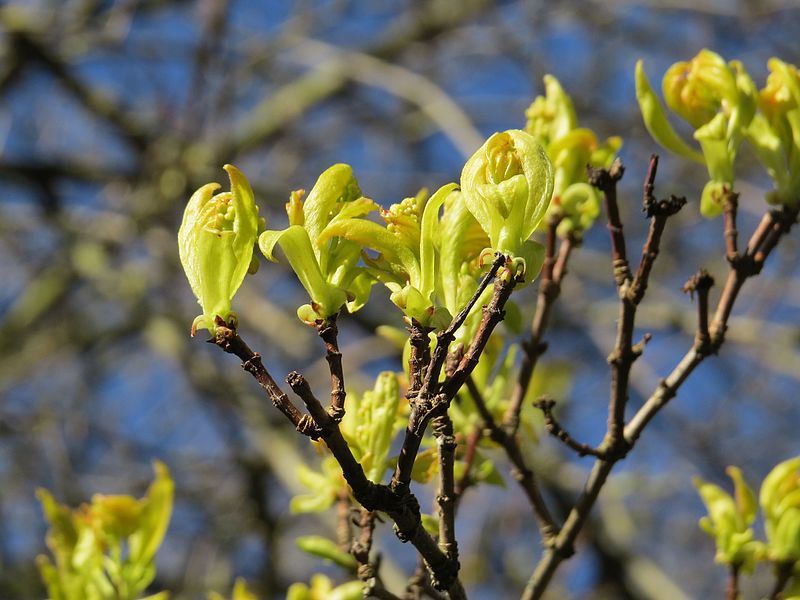
If you want to add organic elements to your deck, think about planting outdoor patio trees.
Here are three of the easiest trees to grow on your patio:
- Amur Maple (Acer ginnala): The sprawling canopy of the Amur Maple, which grows in zones 3 through 8, can be a showy addition to any patio. It’s fast-growing but can become invasive–leave it confined to a container.
- Goldenrain Tree (Koelreuteria paniculata): If you want a tree that puts on a show of flowers, you’ll fall in love with the Goldenrain Tree. This tree blooms golden-yellow blooms profusely and thrives in zones 5-8. Downside? Cleaning up spent blooms.
- Boxwood (Buxacae): The boxwood family is made up of over 123 species of evergreen shrubs. They are ideally suited for topiary, and make stately works of art when grown in containers and shaped.
If you live in a rental home and literally don’t want to put down roots, a patio tree is a perfect solution to your gardening dilemma.
Ornamental plants and flowers
There’s something spectacular about the colors and fragrances of fresh flowers. Creating a combination of flowers and ornamental plants creates interesting layers of textures and colors, indoors or out.
Choosing flower planters is fun, as you can express your creativity through a wide range of options to enhance the plant’s natural beauty.
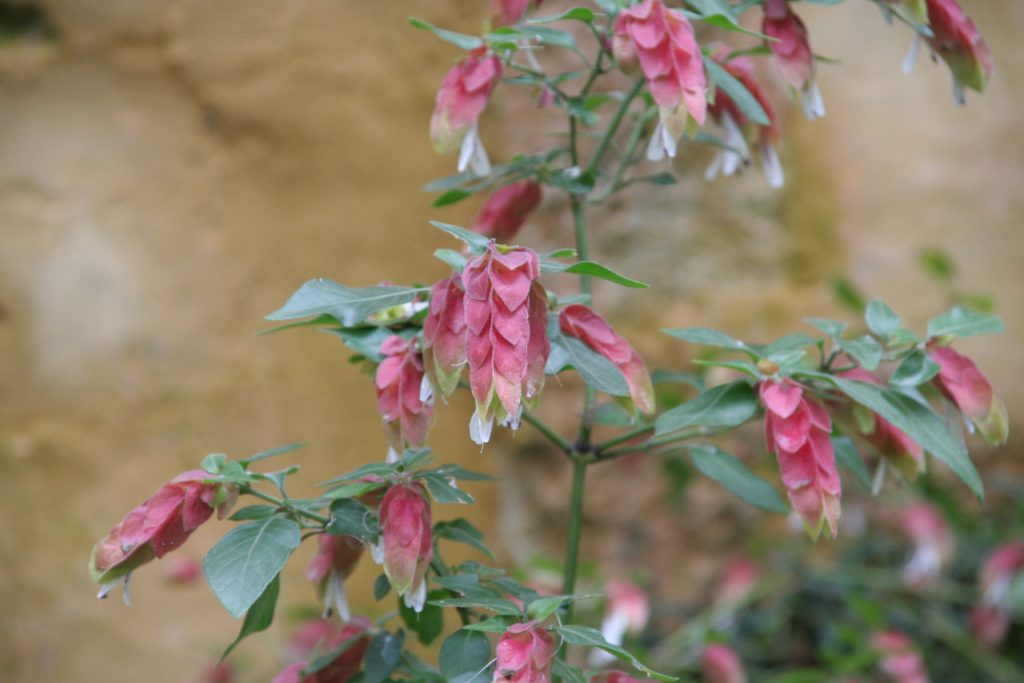
Indoor ornamental plants and flowers:
- Peace Lily (Spathiphyllum): Houseplant enthusiasts know that the peace lily is an easy-care ornamental plant. It blooms delicate white blossoms with a subtle fragrance. Requires occasional watering and filtered sunlight.
- Shrimp plant (Justicia brandegeeana): The shrimp plant takes its name from the shape and color of its blossoms. Yes, they resemble a shrimp. This plant thrives in indoor hanging baskets. Keep it moist and give it plenty of direct sunshine to make it bloom.
- Zebra plant (Aphelandra squarrosa): The zebra plant steals the show with its striped leaves and tropical blossoms. It’s fairly fussy about water, but your effort is worthwhile. Con: it has a short life span of one year.
Outdoor ornamental plants and flowers:
- Fuchsia (Epilobium canum): Want to attract hummingbirds to your patio? Try outdoor hanging planters of fuchsia. The tiny birds love the nectar from the bright pink blooms. The plant requires direct sunlight and not too much water.
- Rosemary (Rosmarinus officinalis): Pot rosemary on your patio or deck and let it grow into a shrub. Prune it, shape it, and enjoy the fragrant scent. It likes 6 hours of sun and a little water. Overwinter indoors for year-round pleasure.
- Mosquito Plant (Pelargonium citrosum) Keep pesky mosquitoes at bay and enjoy the fragrant citronella scent and dark green leaves of the mosquito plant. Easy care, give it filtered to full sunlight and water to keep moist.


Plants that love “hanging around”
Some plants absolutely thrive while hanging in a nice sunny place, indoors or out. The advantage of the plants I’m suggesting is that you can use them outdoors in the summer then bring them inside once the weather turns cool.
A plant that brings year-long enjoyment is one that’s always worth the time spent cultivating!
Spider Plant (Chlorophytum comosum): Spider plants have beautiful variegated green & white leaves. Over time, they drape gracefully over the edge of the pot. They have tuberous roots that like to spread–give them a medium to large garden planter.
Geranium (Geranium endressii): Hang flower planters filled with geranium to attract butterflies in the summer. In the winter, hang your basket in a sunny place. You won’t likely get blooms indoors, but you’ll enjoy it as a houseplant.
Boston Fern (Nephrolepis exaltata): Need a plant that will survive less sunlight? Consider a Boston Fern. In nature, they grow shaded in the woods. They like cool, moist area and filtered sunlight. They spill out the hanging planter attractively.
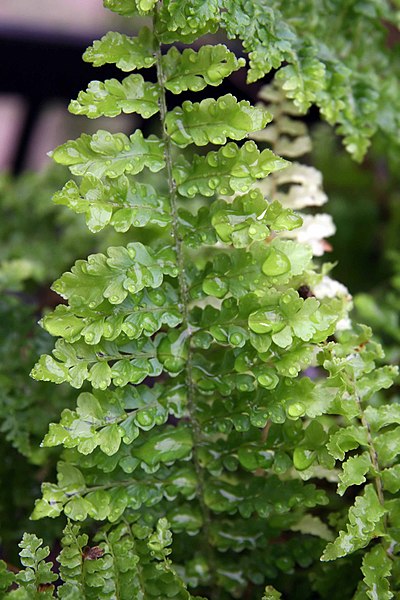
Early spring is here, get planting!
The time to plant your container garden is early spring. Because you’ve wisely used garden planters, you’ll find it easy to move them to a protected area should you experience a late-season frost.
Remember to choose your pots according to the root size and weight of the plant you’ll be growing, locate the pot in just the right amount of sun, and keep your plants watered as needed.
You’ll enjoy your garden planters more than you can imagine. Plus, in many cases, you’ll be able to overwinter them inside the house for further pleasure.
When you are gardening in containers, the only limit is your imagination.
Have you used any unique planters? We’d love to hear about them.
Let’s keep on growing!

Hi! My name is Deborah Tayloe. I’m a full-time freelance writer and blogger. I blog about my favorite things: gardening, cooking, and DIY. I live in a very rural area called Bertie County, North Carolina. Here, I have plenty of open space to pursue my gardening habit. I’m a regular contributor to GardensAll and publish my own blog, DIY Home & Garden.


